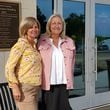Physicians in this country experience extremely high levels of burnout — and that’s contributing to medical errors.
That’s the conclusion of a new Mayo Clinic study that found more than half of the physicians nationwide experience burnout, defined as either emotional exhaustion or a feeling of distance from a one’s job and colleagues, said Dr. Christine Sinsky, the vice president of professional satisfaction at the American Medical Association and a researcher on the study.
Those findings resonate with Dr. Albert Chan, the chief of digital patient experience for Sutter Health and a family medicine doctor.
“Our physician culture (is) very much a culture of: put the patients first, which we always do and still do,” he said. “But sometimes it’s at the expense of ourselves. And increasingly we understand that that’s not a healthy thing.”
The study, published in Mayo Clinic Proceedings, compiled survey results from 6,695 physicians responding to topics including fatigue, burnout, thoughts of suicide and workplace safety.
Thirty-two percent of respondents reported feeling excessive fatigue and more than 10 percent said they had committed what they considered to be a major medical error in the three months prior to taking the survey.
The physicians who reported major medical errors also acknowledged higher levels of burnout. Of the 663 physicians who reported medical errors, nearly 40 percent said the mistakes were caused by errors in judgment and 20 percent attributed them to an incorrect diagnosis.
“The study found that there’s two times the rate of perceived error when physicians are burned out,” Sinsky said.
The survey asked physicians to give their work areas a grade based on patient safety. Burnout was found to be more likely in areas with low safety grades, but it also occurred in areas with high safety grades.
“High burnout, even in an excellent safety environment, is nearly as risky as no burnout in a unit that had a poor safety grade,” Sinsky said.
Medical errors are responsible for 100,000 to 200,000 patient deaths every year in the United States, according to the study.
The study linked burnout rate to factors including a “chaotic work environment or lack of control over that work environment,” Sinsky said. Another factor is work that takes physicians away from direct patient care.
“(There is) a great increase in the amount of administrative and clerical work,” she said. “That disconnects physicians from the reason why they went into the profession in the first place and that’s a source of burnout.”
Physicians can be slow to seek out personal help, sometimes resorting to self care and end up committing suicide at a rate that exceeds national averages, the study reports.
Dr. Peter Yellowlees, a professor of psychiatry and the vice chair for faculty development in the UC Davis Department of Psychiatry, has researched the suicide issue.
“It’s estimated there’s something like 400 physicians a year in American suicide — that’s the equivalent of two large medical school classes,” said Yellowlees, who recently published a book titled “Physician Suicide Cases and Commentary.”
As a practicing psychiatrist, Yellowlees sees physicians as clients. These physicians come from a variety of health groups, including UC Davis, Sutter Health, Kaiser Permanente and Mercy General Hospital as well as private practice. Burnout is a minor psychiatric problem that can have more severe implications, Yellowlees said.
“I think it’s pretty clear burnout can act as a trigger,” he said. “We know that there are lots of causes of depression. If you then are in a situation where you’re feeling very burnt out through your work, it can be a trigger.”
In addition to its effect on physicians, burnout also hurts physicians’ families and their patients in various ways.
“We know that patients are less adherent to our treatment recommendations when physicians are burned out, physicians show less empathy to their patients when burned out and physicians are less satisfied with their care,” Sinsky said. “Physicians and other clinicians who are burned out are at higher risk of divorce, diseases such as coronary artery disease, drug and alcohol abuse.”
In the 16 years Chan has been in practice as a family medicine doctor, he said he’s never experienced burnout. But he’s seen the impact on his colleagues.
“At a minimum, we spend 11 plus years to get where we’re at and to reach the end of your training, which is really just the beginning of your career, and … you wonder if you should continue to be a physician and you’re fatigued — that’s a concern,” Chan said.
Some researchers looking into physician burnout have criticized similar efforts, saying they blame physicians instead of broader issues and employers for burnout.
“It’s more nuanced, I think,” Yellowlees said. “It’s absolutely true that you can’t resilience yourself out of burnout. It’s undoubtedly the organizational issues that cause burnout and that need changing. That’s why most groups … are trying to change the organizational culture. And you’ve got to avoid blaming physicians.”
But because physicians tend not to seek out care, it can be important for health systems or organizations to encourage physicians to do so, he said.
Sinsky said she thinks change on a systemic level will yield more long-term results.
“It’s my observation that 80 percent of burnout is driven by system factors and only 20 percent is driven by individual factors,” Sinsky said. “We really get more for our investments if we invest in system factors that reduce burnout.”
The American Medical Association and Sutter Health are looking into regulatory issues that can add to the administrative load on physicians. Maintenance of electronic health records is one time-consuming area both groups mentioned.
About the Author



/cloudfront-us-east-1.images.arcpublishing.com/ajc/P7DYBH6TO7FEKG4SUXQQKADRXE.jpg)


